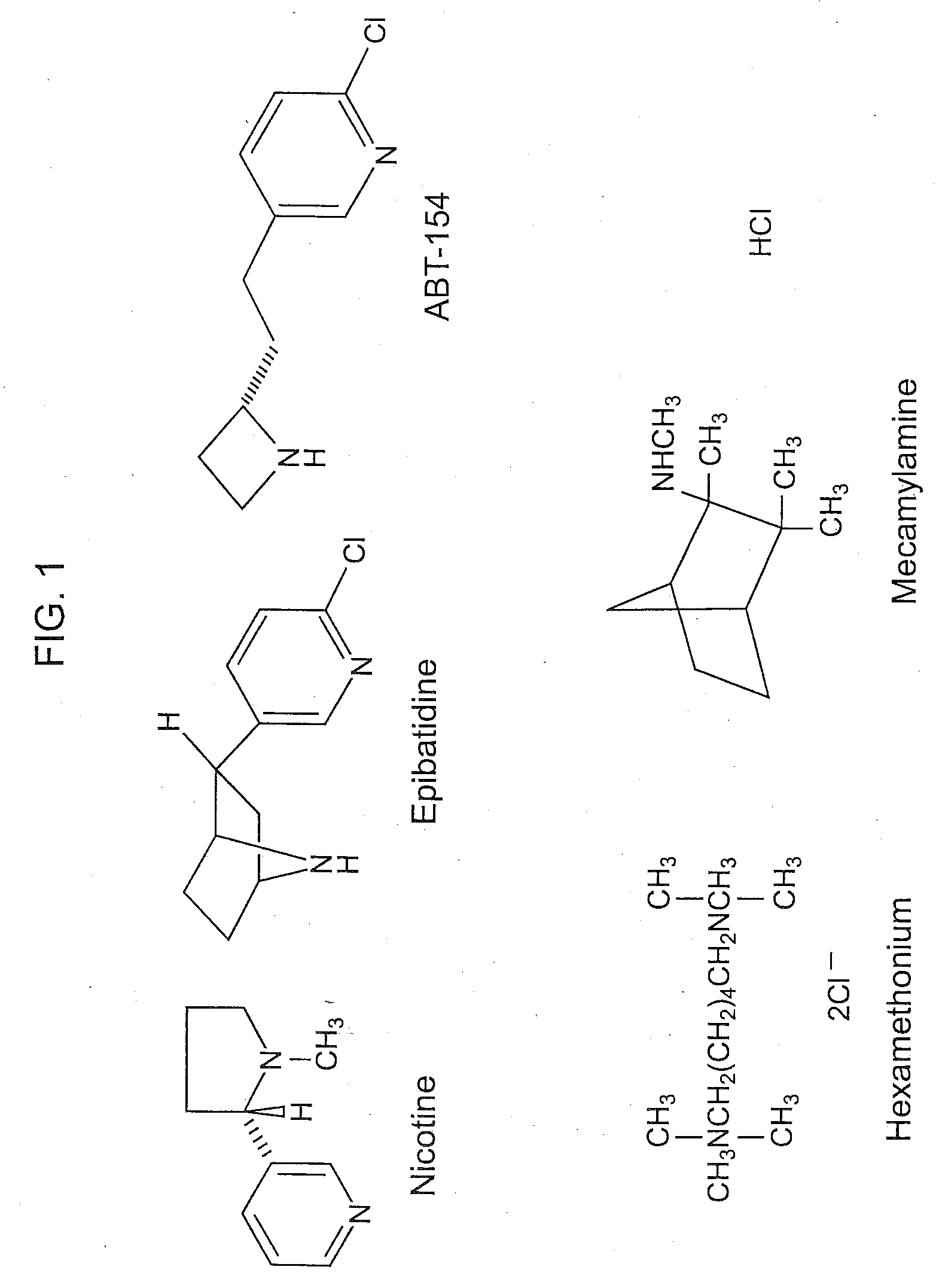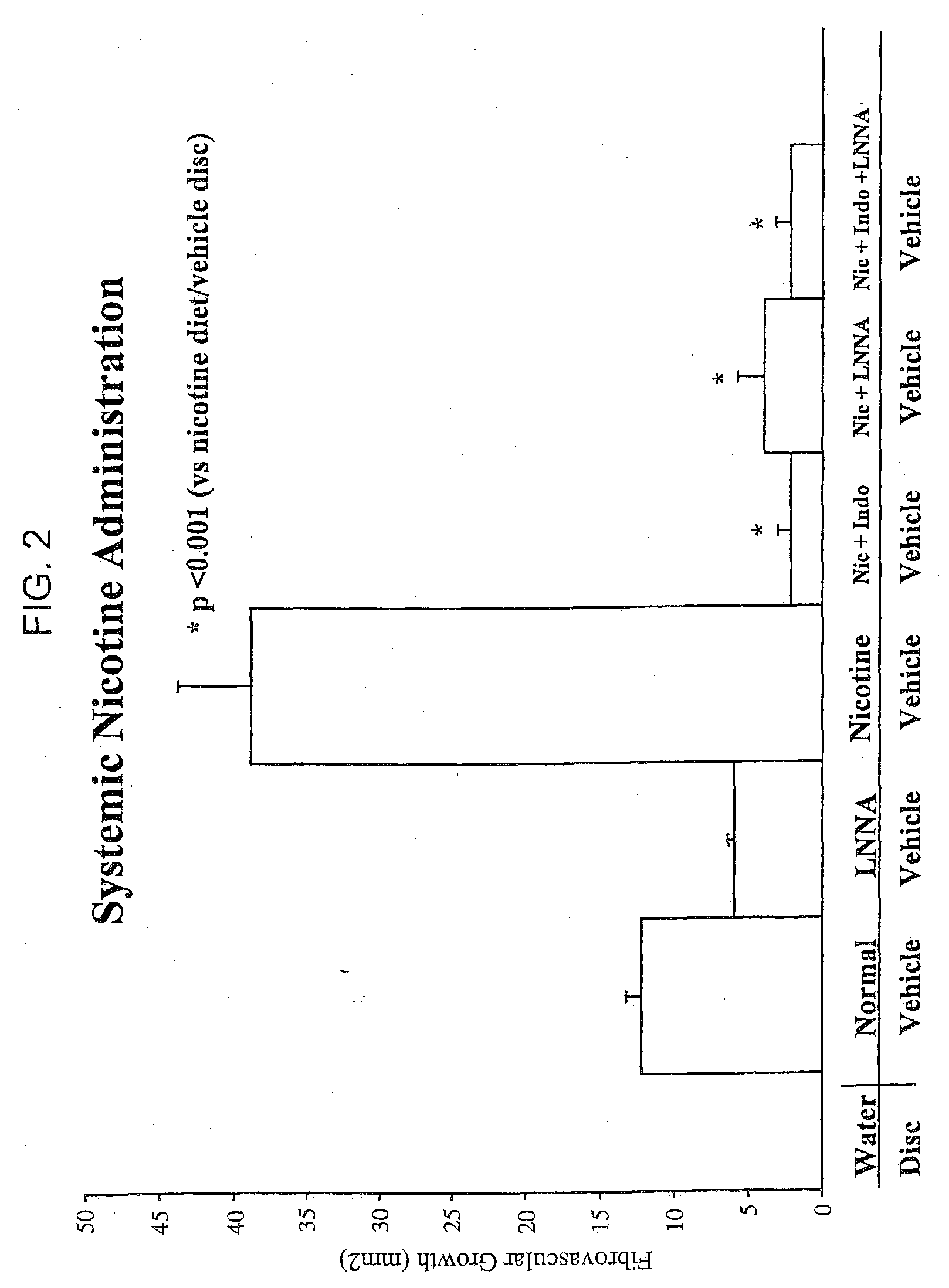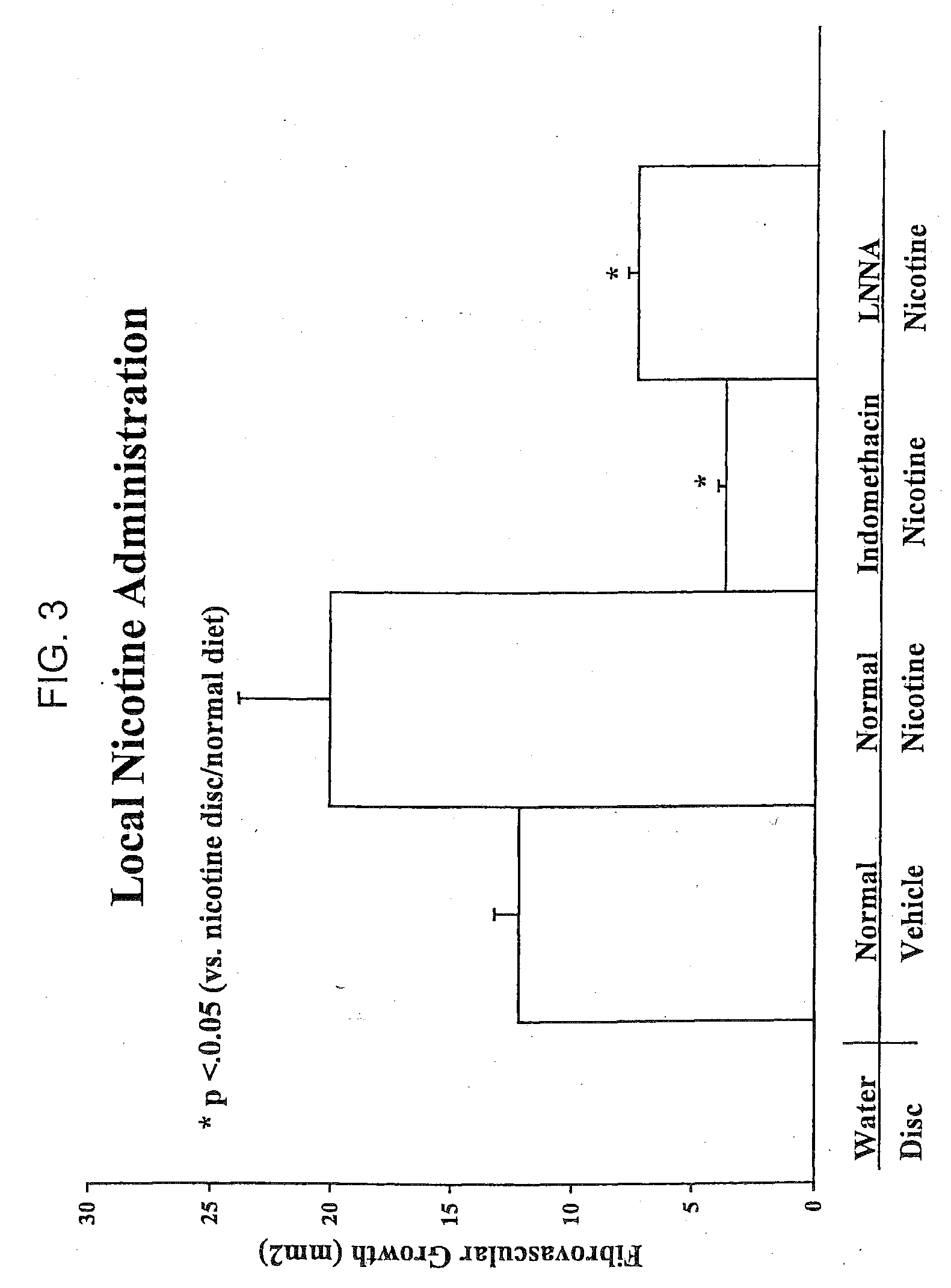Nicotine receptor agonists in stem cell and progenitor cell recruitment
a technology of nicotine receptor and stem cell, applied in the field of stem cell and progenitor cell mobilization and recruitment, can solve the problems of limited therapeutic applicability of some of these compounds, especially as systemic agents, and achieve the effect of increasing fibrovascular growth
- Summary
- Abstract
- Description
- Claims
- Application Information
AI Technical Summary
Benefits of technology
Problems solved by technology
Method used
Image
Examples
example 2
Local Effect of Nicotine Upon Angiogenesis In Vivo
[0132]In order to determine if local administration of L-arginine could be effective at inducing angiogenesis, in some animals, nicotine was placed within a pellet that was inserted into the disc angiogenesis system (described above). When nicotine was placed in the disc (rather than administered in the water of the animals as described in Example 1) a similar effect was observed. The fibrovascular growth under basal conditions (about 10 mm2) was increased to about 20 mm2 (FIG. 3). Again, indomethacin or LNNA blocked the effects of nicotine. These studies indicate that systemic or local administration of nicotine induces angiogenesis.
example 3
Comparison of Effects of Nicotine with Other Angiogenic Agents
[0133]The effects of nicotine were compared with the angiogenic agents bFGF and
[0134]Dell. The comparison with bFGF is particularly important because this agent is already in clinical trials in humans for therapeutic angiogenesis. In comparison to vehicle, bFGF, Dell, and nicotine each increased angiogenesis to the same degree. Systemically administered nicotine enhanced angiogenesis to a much greater degree than locally administered bFGF and Del-1 (FIG. 4). Paradoxically, the effect of systemic nicotine administration was greater than local nicotine administration, even though systemic nicotine administration undoubtedly produced lower local levels in the disc. This paradox led the investigators to consider that the systemic administration of nicotine was inducing vasculogenesis(recruitment of endothelial precursors from the bone marrow) as well as local angiogenesis (see Example 5 below). Intermediate doses of nicotine ...
example 4
Induction of Angiogenesis in the Murine Hindlimb Ischemia Model of Peripheral Arterial Disease
[0135]To provide more compelling evidence for the therapeutic angiogenic effects of nicotine, the angiogenic effects of nicotine were examined in a model of arterial occlusive disease, the murine ischemic hindlimb (described above). Daily intramuscular injections of nicotine solution or vehicle were administered (50 μl) for a period of three weeks. Five groups of animals received 0, 3, 30, 300 or 3200 ng / kg of nicotine by intramuscular injection daily (represented in FIGS. 6 and 7 as 1× (0.0811 ng nicotine in 50 μl saline (=0.003 μg / kg), 10× (0.811 ng nicotine in 50 μl saline (=0.03 μg / kg), 100× (8.11 ng nicotine in 50 μl saline (=0.3 μg / kg), and 1000× (81.1 ng nicotine in 50 μl saline (=3.2 μg / kg)). As shown in FIG. 5, 3 weeks after surgery, capillary density (capillaries / myocyte) was increased in operated limbs (ischemic) in comparison to non-operated limbs (non-ischemic) consistent with ...
PUM
 Login to View More
Login to View More Abstract
Description
Claims
Application Information
 Login to View More
Login to View More - R&D
- Intellectual Property
- Life Sciences
- Materials
- Tech Scout
- Unparalleled Data Quality
- Higher Quality Content
- 60% Fewer Hallucinations
Browse by: Latest US Patents, China's latest patents, Technical Efficacy Thesaurus, Application Domain, Technology Topic, Popular Technical Reports.
© 2025 PatSnap. All rights reserved.Legal|Privacy policy|Modern Slavery Act Transparency Statement|Sitemap|About US| Contact US: help@patsnap.com



